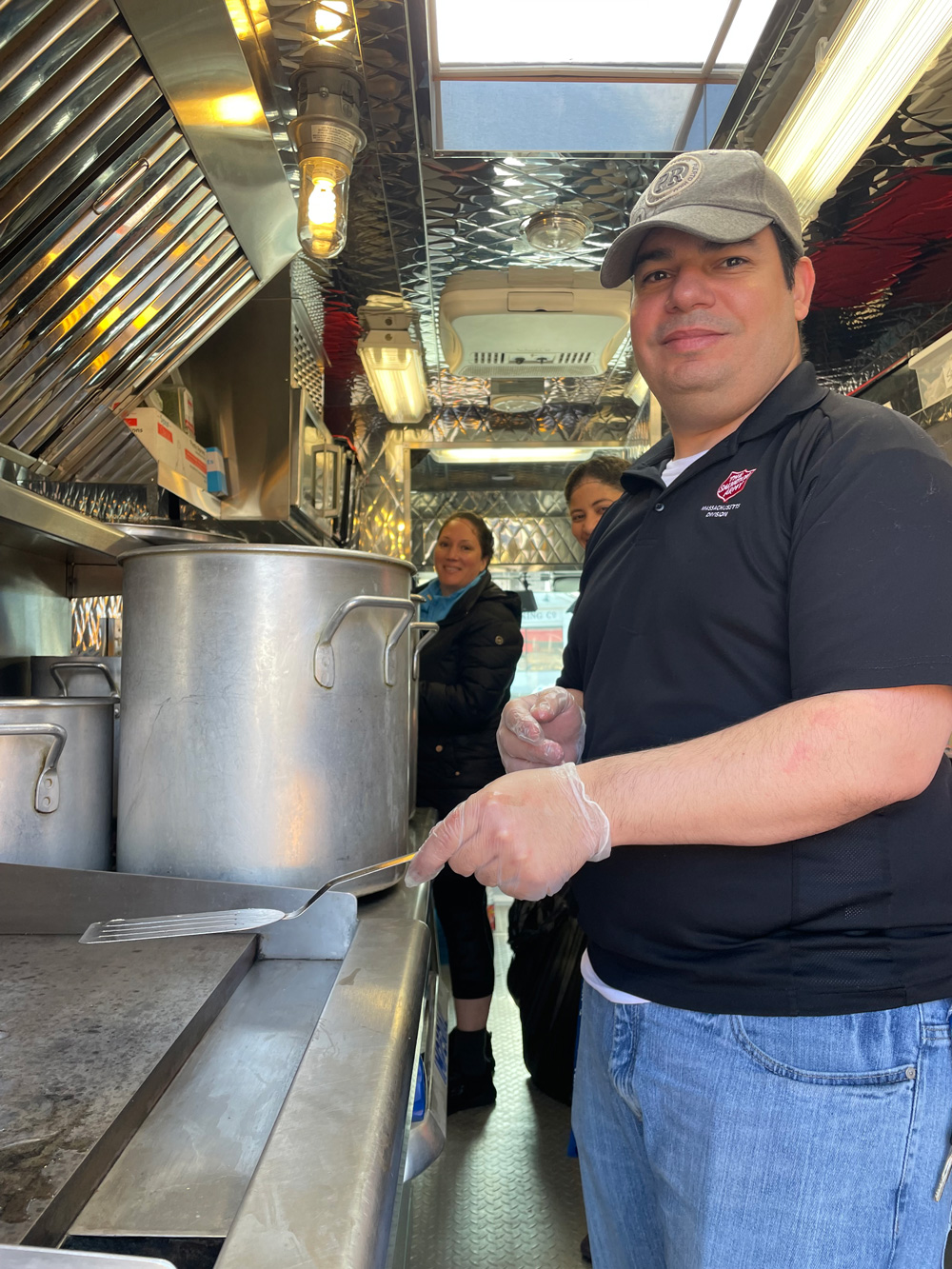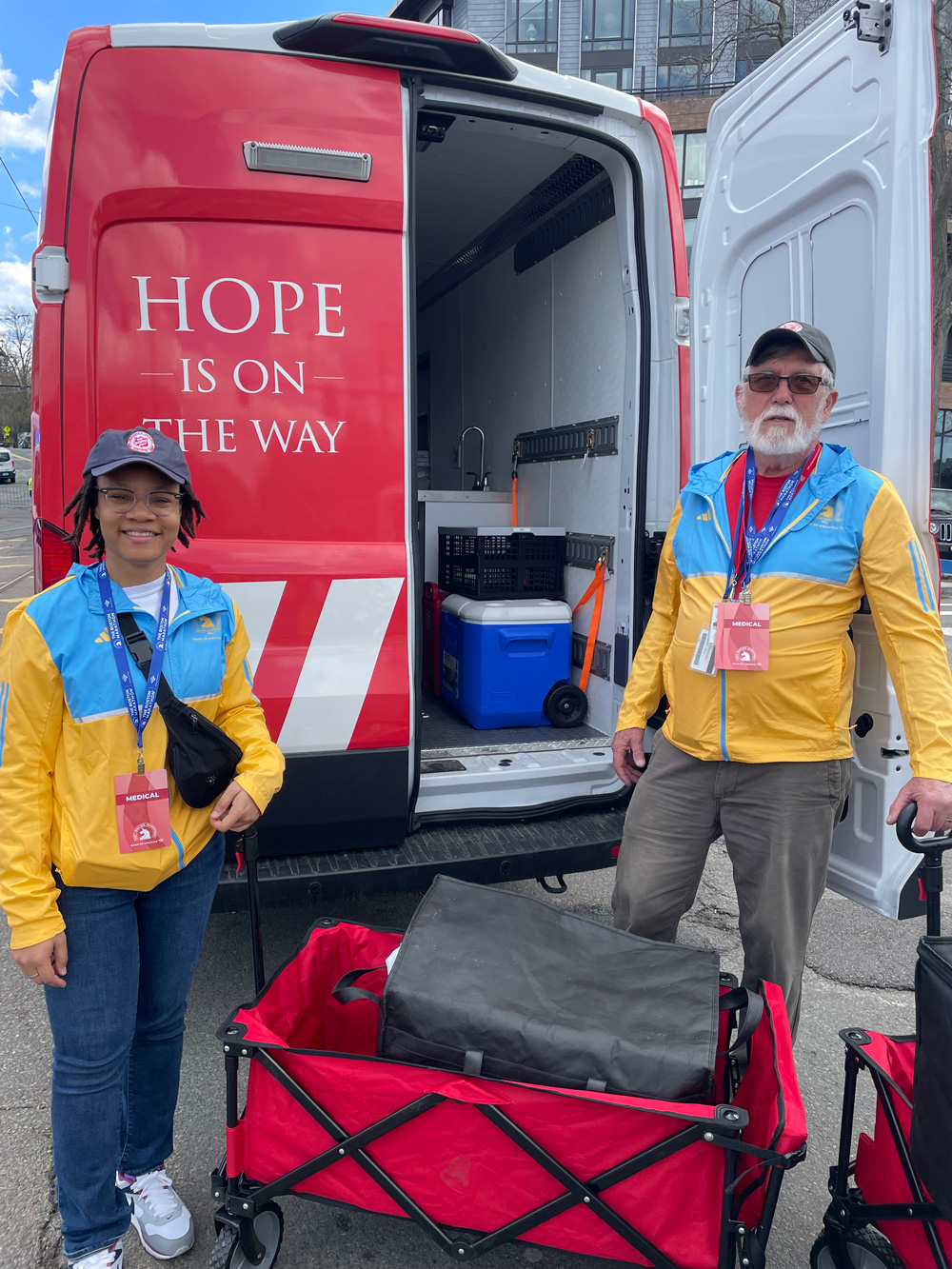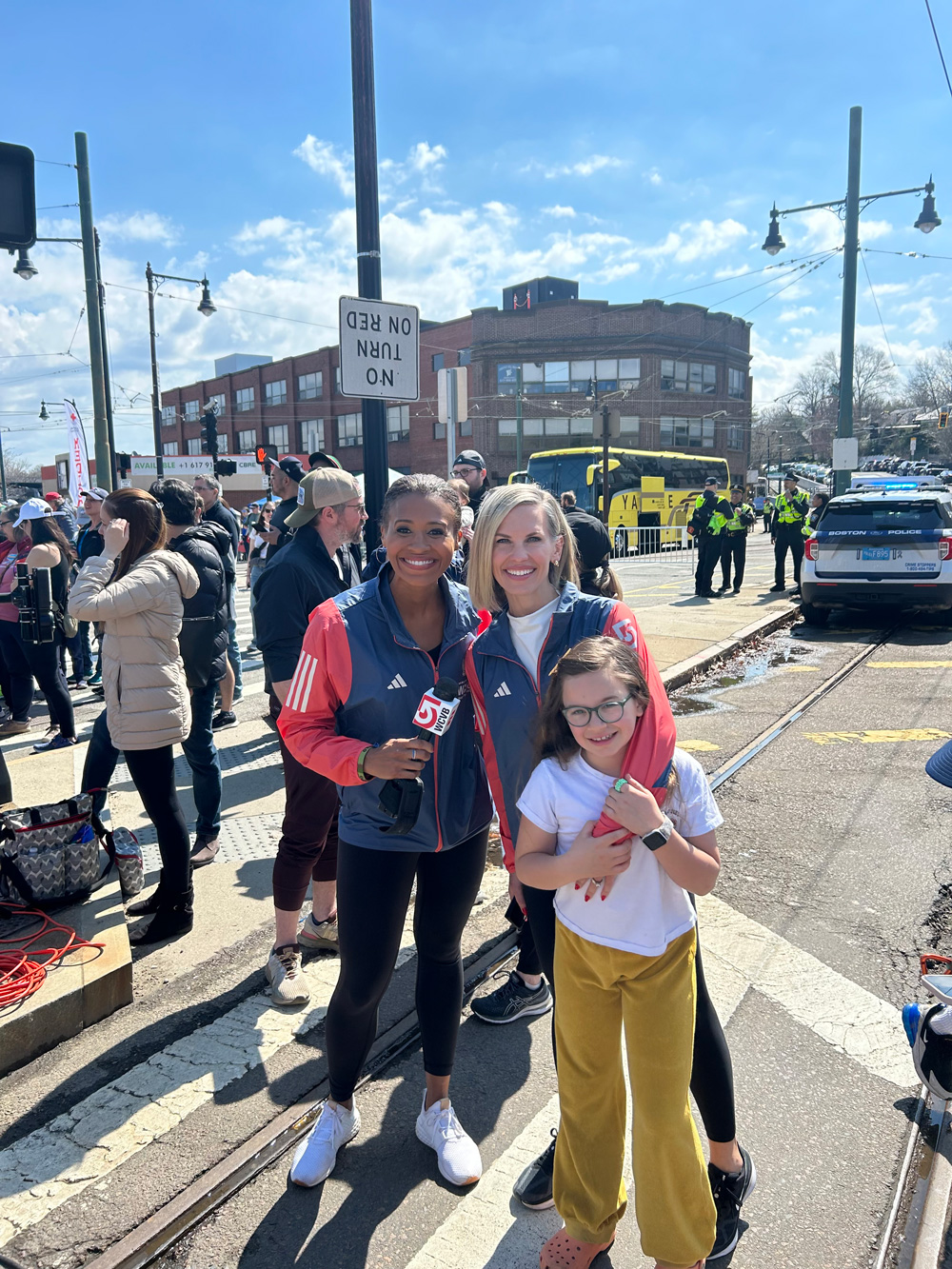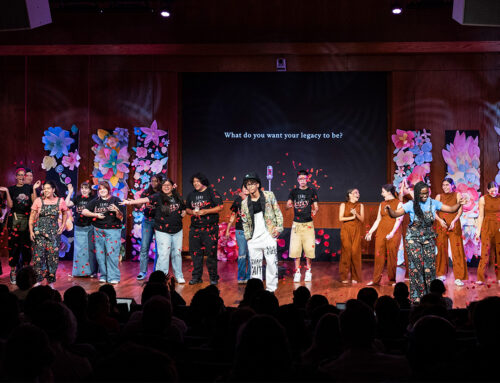
The Army at the Scene: Boston Marathon
by Hugo Bravo
The Boston Marathon is the world’s oldest annual marathon and ranks as one of the world’s most prestigious racing events. The highly publicized race attracts an average of 30,000 runners and over a half million live spectators each year. As runners lined up at the starting line in Hopkinton, more than 60 volunteers from The Salvation Army Emergency Disaster Services (EDS) were already serving meals to the hardworking people behind the scenes at six different locations along the 128th Boston Marathon’s 26.2-mile path.
While it’s easy for many people to forget the tragic events of the 2013 Boston Marathon, those in emergency management still remember the day when two homemade bombs detonated near the finish line, killing three and leaving hundreds injured. It was after this tragedy that The Salvation Army Massachusetts Division began bringing its canteens to provide sustenance and support to the increased number of safety personnel.
“Our response to the bombing was huge,” says Emily Mew, director of EDS for The Salvation Army in Massachusetts. “We immediately deployed multiple canteen trucks to both the Castle and the Watertown manhunt, providing emotional and spiritual care to runners, families and first responders. Additionally, we served nearly 20,000 meals, snacks, and drinks throughout our entire response. The enormity of this opened doors for us to develop additional partnerships with Massachusetts Emergency Management (MEMA), the City of Boston’s Office of Emergency Management (OEM), and the Boston Athletic Association (BAA).”
Since that day, the Army’s footprint at the marathon has steadily grown.
“For a couple of years after the bombing, we had two or three canteens stationed in key locations in case another crisis occurred. Each year since, we have grown this presence leading to what we currently do: being right in the mix, right along the route and at the finish line, serving and delivering meals to medical volunteers, safety personnel and runners alike. Today we are official partners along the race route; it’s an amazing opportunity to serve at such a renowned international event.”
In the weeks and month leading up to the 2024 Boston Marathon, The Salvation Army in Massachusetts worked with MEMA, OEM, and the BAA, as Salvation Army staff also served on marathon prep committees.
“After COVID-19, our involvement grew even more. This year, we were involved in pre-event feeding and public safety events. We had teams stationed at six stops, with eight vehicles and rabbit vehicles along the route. You couldn’t miss our Command Center in Wellesley and two canteens at the finish line.”
First responders and fans
At Wellesley, I met with Salvation Army volunteers and staff from the New Bedford Corps. Their canteen had been cooking up a feast of hot meals for the first responders and volunteers who had been working for hours before the start of the marathon. When the first batch of marathon participants appeared, the ringing sound of Army bells cheered on every approaching runner and wheelchair on the race route. The scene was booming with excitement as a growing crowd cheered and held up homemade signs for loved ones.
“Our presence shows that we have come to serve the community; it opens doors for the future,” said Major Moises Muniz, corps officer in New Bedford. “Plus, our volunteers love to be here, and they love this ministry.”
Connie Correia, a case worker at the New Bedford Corps, said the Army’s work is to support events like this.
“It shows the unique ways that our EDS team can help,” said Correia.
My second stop was at the Boston’s Cleveland Circle, known for its mix of roaring college students and residents along Beacon Street. Runners arrive there after completing one of the hardest parts of the route, Heartbreak Hill. The scene was lively and packed, with local media outlets interviewing fans, and the Pittsfield Salvation Army grilling burgers and hot dogs to take over to the marathon’s medical tents. Police officers stopped by to talk with the Army volunteers and left with Gatorade and chips, thanking the Army for their support.
Business owner Arthur Anton, a longtime member of The Salvation Army Greater Boston Advisory Board, said that in past years, work responsibilities had kept him from taking part in the day’s activities.
“Because my committee is Emergency Disaster Services, I wanted to be involved. My wife Nina and I decided to take off work and finally do it,” says Anton. “While doing the training and preparation that all volunteers are required to do, I learned about the meals EDS served and the long days and weeks at ground zero on 9/11. I was amazed by it, and that’s why I’m here today; I want to get the word out on the important work that EDS does.”

Two at the finish line
The two EDS canteens at the Boston Marathon’s finish line filled very different needs. The first one was in high demand from the very beginning of the day. “As soon as the team arrived, everyone was already looking for food,” explains Emily. “There were officials and marathon volunteers that had been setting up since dawn. By the time the race had started miles away, they were already hungry.”
In past years, the finish-line canteen had been pushed to its limit. To fix this, Emily worked with the police department to find a suitable spot for a second Salvation Army feeding post. They decided on a street where runners who had just finished the marathon would come to meet their families, make phone calls, or emotionally break down from pride and physical exhaustion. Here, runners found The Salvation Army waiting for them with chips, pastries, burgers, macaroni and cheese, and other treats. One athlete approached the canteen after recognizing the words “Doing the Most Good” on the tent. She shared that her mother was a senior soldier back in her home state of California. Another runner donated their just worn (but nearly brand-new) running shoes to be sold at a Salvation Army thrift store.
“Police officers and the runners come up to our table, hesitate for just a second, and then ask how much we charge,” Major Gilbert Parkhurst, corps officer at the Danbury Corps in Connecticut. “When we tell them that it’s for them and they can take anything they want, you can see the gratitude in their faces. It’s significant to them, many of whom were here during the bombing, to see us here in support of them.”
Major Parkhurst, a Massachusetts native, says that being able to come back to serve in his home state is personally meaningful and emotional to him.
“Massachusetts is my home, and it’s great to do something for my home,” says Parkhurst. “I also love seeing the two divisions (Massachusetts and Southern New England) working together. In case anything ever happens, we will always have each other’s back.”
Success and gratitude
At the end of my day at the Boston Marathon, I could not help but be overwhelmed by the feeling of immense gratitude that I sensed coming from all quarters: not just from the officials and runners who saw the Army at the scene, but from the EDS volunteers who had been training and preparing for weeks to make The Salvation Army’s presence a success. Everyone I met at the canteens was thrilled and grateful to be at this yearly ministry. The joy of being in service to the Boston community on this historic day radiated in every meal they gave out and laughs they shared with the community and one another.
“As you can see, it takes so much teamwork to make an operation like this successful. I get a little emotional when I think about how much you all put into this,” said Emily Mew in an email to the EDS staff a day after the marathon. “I genuinely hope you can all take some time to rest and reflect on the power of your service.”










